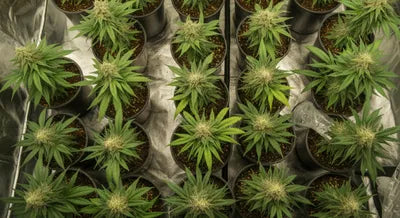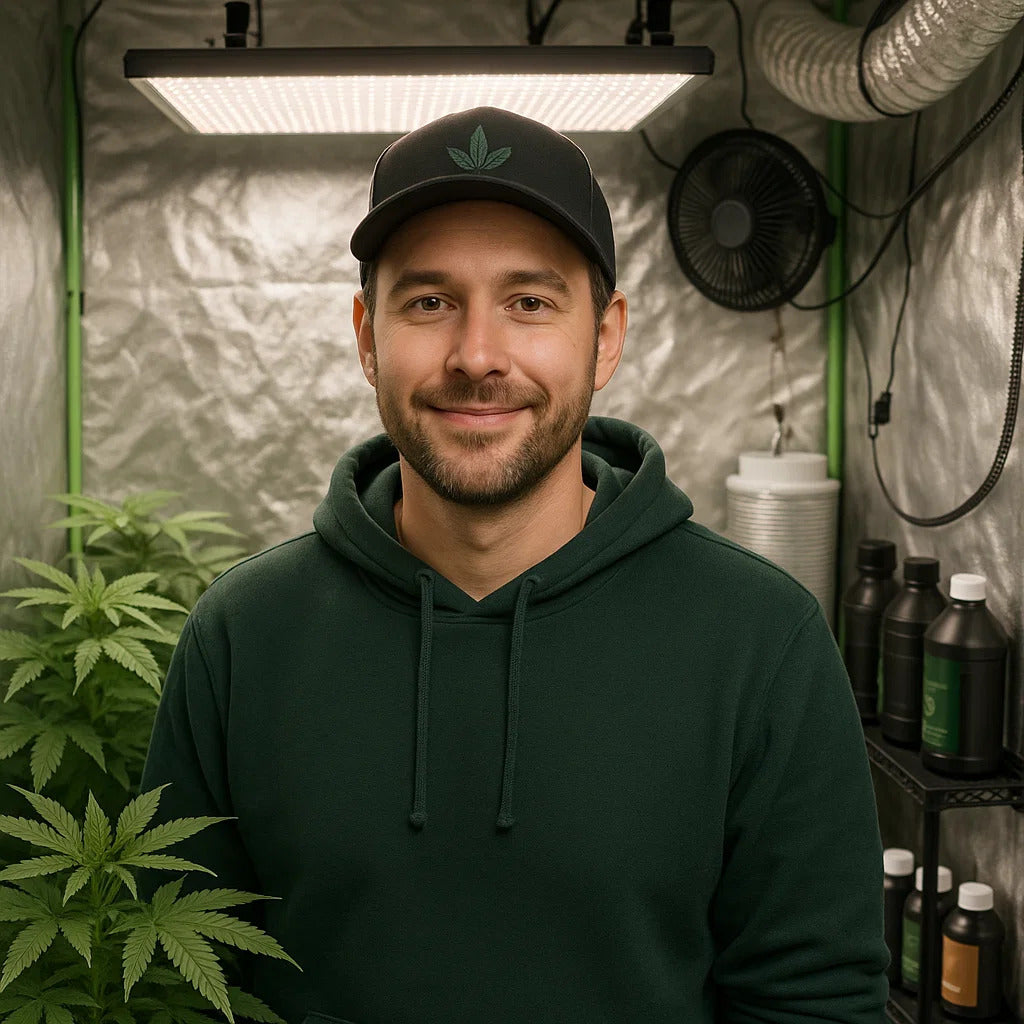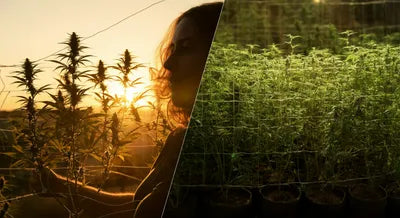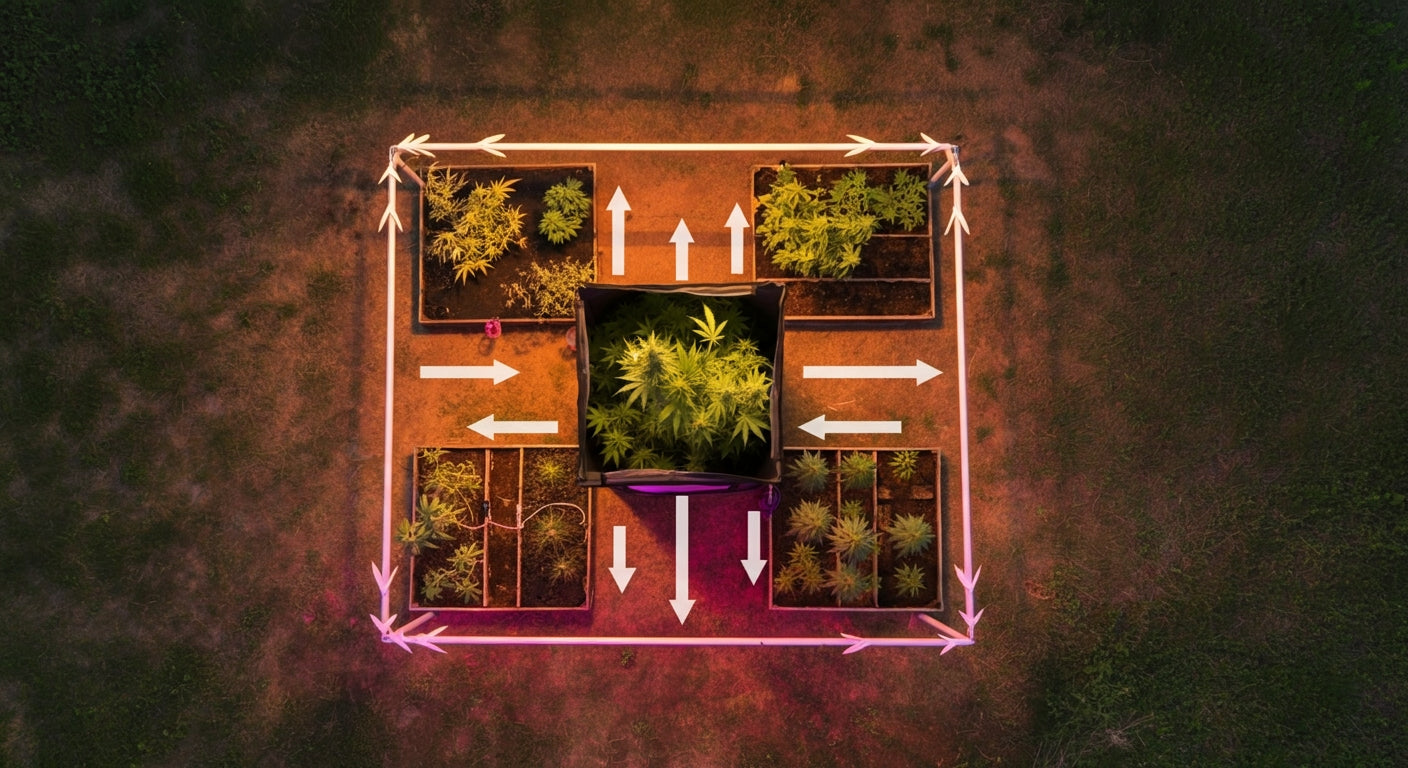
How to Maximize Yield in Small Spaces: Micro Growing Techniques
Small spaces don't mean small harvests. With advanced micro growing techniques and the right equipment, you can achieve impressive yields even in the tiniest growing environments. Whether you're working with a closet, spare room corner, or 2x2 grow tent, these proven strategies help maximize every square inch of growing space.
Modern micro growing combines space-efficient training methods, compact equipment, and optimized environmental control to produce yields that rival much larger operations. The key lies in understanding how to manipulate plant growth patterns while maintaining optimal growing conditions in confined spaces.

Understanding Micro Growing Fundamentals
Micro growing refers to cultivation techniques specifically designed for spaces under 16 square feet. Small grow tents create perfect micro growing environments by providing precise environmental control in compact footprints.
Key Principles of Micro Growing
Space efficiency: Every cubic inch must serve a purpose for plant development or equipment function. 2x2 grow tent kits maximize limited space with carefully selected, compact components.
Intensive training: Plants require aggressive training to fit small spaces while maintaining high yields. Traditional growing methods won't work in micro environments.
Environmental precision: Small spaces demand tighter environmental control since temperature and humidity fluctuations happen faster in confined areas.
The Gorilla SHORTY grow tent exemplifies micro growing design with its compact 2x2.5x5'7" dimensions, perfect for space-constrained environments.
Essential Equipment for Micro Growing
Success in small spaces requires carefully selected equipment that maximizes functionality while minimizing footprint.
Compact Grow Tent Selection
2x2.5 grow tents provide the ideal balance of growing space and equipment accommodation. The Gorilla Lite Line offers budget-friendly options without sacrificing essential features.
Key features for micro growing tents:
- Height adjustability: Essential for training flexibility
- Multiple ducting ports: Crucial for proper ventilation in small spaces
- Reflective interior: Maximizes light efficiency in confined areas
- Sturdy frame construction: Must support training equipment and dense plant loads
Space-Efficient Lighting Solutions
Xi220 LED grow lights deliver professional-grade lighting in compact packages perfect for micro growing applications. These lights provide optimal PPFD levels for 2x2 spaces while minimizing heat production.
Micro growing lighting considerations:
- Full spectrum output: Critical for healthy plant development in confined training scenarios
- Heat management: Small spaces amplify heat issues from inadequate lighting
- Adjustable intensity: Allows fine-tuning for different growth stages
- Compact form factor: Leaves maximum space for plant development
Advanced Training Techniques for Small Spaces
Micro growing relies heavily on plant training to achieve maximum yields in minimal space. These techniques transform plant architecture to fit confined growing areas.
Low Stress Training (LST) Mastery
LST techniques form the foundation of micro growing success. This method bends and ties branches to create horizontal growth patterns that maximize light exposure.
Week-by-week LST progression:
- Week 1-2: Begin gentle bending of main stem when plants reach 6-8 inches
- Week 3-4: Continue training main stem while beginning secondary branch manipulation
- Week 5-6: Create radial growth pattern with all branches spread horizontally
- Week 7-8: Fine-tune canopy evenness before transitioning to flowering
Topping and FIM Techniques
Strategic topping creates multiple main colas while keeping plants compact. Training techniques for 4x4 tents scale down effectively for micro environments.
Optimal topping schedule:
- First top: When plants reach 5-6 nodes (usually week 3-4)
- Second top: Target new main branches at 3-4 nodes each
- Final tops: Focus on creating 8-16 main colas per plant
FIM (F*** I Missed) topping creates 3-4 new tops from a single cut, perfect for micro growing density requirements.
SCROG (Screen of Green) Implementation
SCROG netting maximizes yield potential in micro grows by creating even canopies that utilize every inch of growing space.
SCROG setup for micro growing:
- Install screen 12-15 inches above containers
- Begin tucking branches through screen openings during vegetative growth
- Maintain even canopy height by continuing to tuck new growth
- Allow 6-8 inches of vertical growth above screen before flowering
The grow tent accessories collection includes adjustable rope hangers perfect for SCROG net positioning in tight spaces.
Container and Growing Medium Optimization
Space limitations require careful consideration of container sizes and growing mediums to maximize root development within confined areas.
Container Size Strategies
Micro growing container guidelines:
- 1-2 plants in 2x2: Use 3-5 gallon containers for adequate root development
- 3-4 plants in 2x2: Employ 1-2 gallon containers with more frequent feeding
- SOG micro approach: Utilize many small containers (0.5-1 gallon) with minimal vegetative time
What size grow tent for 2 plants provides detailed guidance on container selection for different plant counts in small spaces.
Growing Medium Selection
Soil-based micro growing:
- High-quality potting mix with good drainage characteristics
- Amended soils with slow-release nutrients reduce feeding frequency
- Coco coir blends offer excellent root development in small containers
Hydroponic micro systems:
- DWC setups maximize root development in minimal footprint
- Ebb and flow systems work well with multiple small containers
- Drip systems provide precise nutrient delivery in space-constrained setups
Environmental Control in Micro Spaces
Small growing spaces require precise environmental management since conditions change rapidly in confined areas.
Temperature and Humidity Management
Temperature control strategies:
- Exhaust ventilation: Essential for removing heat buildup from lighting
- Oscillating fans: Improve air circulation in tight spaces
- LED lighting: Reduces heat production compared to HID systems
- Insulation: Grow tent kits include reflective materials that help temperature stability
Humidity management:
- Vegetative stage: Maintain 60-70% RH for healthy growth
- Flowering stage: Reduce to 40-50% RH to prevent mold issues
- Dehumidifiers: Compact units designed for small spaces
- Ventilation timing: Coordinate with lighting schedules for optimal control
Reducing humidity in grow tents becomes critical in micro environments where air exchange rates are limited.
Airflow Optimization
Proper airflow prevents hot spots and stagnant air pockets that can damage plants in confined spaces.
Micro growing airflow setup:
- Intake fans: Position low in tent to bring in cool, fresh air
- Exhaust fans: Mount high to remove warm, humid air efficiently
- Internal circulation: Small oscillating fans prevent air stagnation
- Carbon filtration: Compact filters manage odors without overwhelming small spaces
Strain Selection for Micro Growing
Choose varieties specifically suited for small space cultivation to maximize success rates and yields.

Indica-Dominant Varieties
Ideal characteristics:
- Compact growth patterns: Naturally shorter with less stretch
- Dense bud structure: Maximizes yield per cubic inch of growing space
- Shorter flowering times: Allows more frequent harvests per year
- Sturdy stems: Better support for heavy training loads
Autoflowering Options
Autoflower advantages for micro growing:
- Size predictability: Generally remain small and manageable
- Faster cycles: 8-10 week seed-to-harvest timeline
- Light schedule flexibility: No need for lighting changes
- Multiple harvests: Fit 4-5 cycles per year in same space
Best grow tent setup for beginners often recommends starting with autoflowers for their forgiving nature and space efficiency.
Maximizing Yields Through Feeding Strategies
Intensive growing in small spaces requires precise nutrition to support maximum plant development within confined root zones.
Nutrient Management
Feeding frequency adjustments:
- Small containers: Require more frequent, diluted feedings
- Hydroponic systems: Allow precise nutrient delivery and adjustment
- Soil amendments: Extended-release nutrients reduce feeding requirements
- pH monitoring: Critical in small volumes where changes happen quickly
General Hydroponics nutrients provide reliable, consistent nutrition for intensive micro growing operations.
Advanced Feeding Techniques
Supplementation strategies:
- CO2 enhancement: More effective in sealed small spaces
- Beneficial bacteria: Improve nutrient uptake in small root zones
- Foliar feeding: Supplement root uptake when container size limits nutrient storage
- Bloom boosters: Maximize flower development during critical stages
Harvest Timing and Yield Optimization
Proper harvest timing becomes crucial in micro growing where each plant represents a larger percentage of total yield.
Determining Optimal Harvest Windows
Trichome assessment:
- Clear trichomes: Plant still developing, wait longer
- Cloudy trichomes: Peak THC/CBD levels, ideal harvest time
- Amber trichomes: Indicates THC degradation, more sedative effects
Micro growing harvest considerations:
- Partial harvests: Take mature tops first, allow lower buds to develop further
- Environmental stress: Small spaces amplify stress, monitor plants closely
- Drying space: Plan for adequate drying area outside growing tent
FAQ Section
What's the maximum yield possible in a 2x2 grow tent?
2x2 grow tent yields can reach 4-8 ounces with proper training, lighting, and environmental control. Expert growers achieve even higher yields through intensive techniques.
How many plants should I grow in a micro setup?
For beginners, 1-2 plants allow focus on training techniques. Experienced growers can handle 3-4 plants in small grow tents using SOG methods.
Do micro grows require more expensive equipment?
While compact, high-quality equipment costs more per square foot, the total investment is lower than larger setups. Grow tent kits provide cost-effective complete solutions.
How often should I train plants in micro grows?
Daily monitoring and 2-3 training sessions per week during vegetative growth ensure plants stay within space constraints while maximizing development.
Can I use regular growing techniques in small spaces?
Standard techniques require modification for micro environments. Plants need more aggressive training and precise environmental control than traditional methods provide.
Summary
Micro growing maximizes yields in small spaces through intensive plant training, compact equipment selection, and precise environmental control. Key techniques include LST, topping, SCROG, and proper strain selection combined with optimized feeding strategies. Success requires daily attention and quality equipment designed for small-space cultivation.
Transform Your Small Space Into a High-Yield Garden
Ready to maximize your growing potential regardless of space limitations? Gorilla Grow Tent provides the professional-grade equipment micro growers need for consistent, impressive harvests.
Whether you're starting with a 2x2 grow tent kit or upgrading your current setup, invest in quality components that support intensive growing techniques. Browse our complete selection of small grow tents, compact LED lighting, and essential accessories designed specifically for space-efficient cultivation.

Lena Myles
I'm a mushroom enthusiast and home cook based in Oregon. I'm passionate about foraging and creating fungi-focused recipes, especially delicious, plant-based dishes using gourmet mushrooms like trumpet, shiitake, and oyster. When I’m not in the kitchen, you’ll usually find me wandering the woods in search of new wild flavors.


